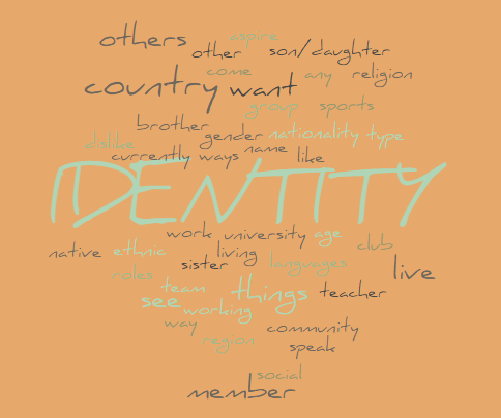Intercultural Communication: Identities
Lead-in reflection
On a piece of paper, jot down as many
Then draw an ‘onion’ (concentric circles) to depict who you are.
Which of these words would you put in the
Will your ‘onion’ look different if you are asked to do the same under different circumstances? Why? (Why not?)

As you may have guessed already, there is no right or wrong answer as the purpose of the introduction is to get you thinking about the complexity of who you are. However, you may find the following comments useful.
Some of the items on your ‘onion’ chart will be related to:
- the roles you play in life: a daughter, a friend, a
PhD student, a researcher, a member of EURAXESS staff; - your religion;
- where you were born, where you now live;
- belonging to a minority or not;
- your gender and your sexuality;
- the parts of your identity you may be able to choose: fan of a certain type of music, member of a political party, style of clothes;
and, perhaps strangely,
- what you are not or don't want to be: not a woman, not a socialist, not French, not an alcoholic.
Identity is not only a question of how we perceive ourselves. Others identify us, and we may not like the label they give us.
Based on All Different, All Equal (Council of Europe, p. 30-31)
Presentation
Identities
“Individuals are simultaneously members of a large number of different social groups (such as national groups, racial groups, religious groups, gender groups, etc.). When
These multiple identifications with social groups, attributes, relationships and roles help individuals to orientate, position and define themselves in the social world relative to other people. The term ‘identification’ is used here (rather than ‘identity’) to help capture the notion that identifications are active psychological processes (rather than reified entities which individuals possess).” (From the CoE Autobiography of Intercultural Encounters, p. 13)
Hands-on Tasks and Reflection
1 Read this personal story by a young academic. Compare it to your ‘onion’ from the lead-in reflection. Were there any differences
According to the social roles which I take, I am a daughter to my parents, a sister to my brother, a student and a
The problem is, it is nearly impossible to build a complete image of myself at all. You could give me 5 characteristics and they would not be the same as the 5 I would choose to define myself with.
However, the question with explaining one’s identity can be very touchy. There are many people who identify themselves with their nationality or their demographic status. If this is the case, then I am a middle-class Bulgarian woman. Sadly, I don’t feel as if this is barely enough to define who I am.
All in all, we can mentally build the images of ourselves and play with them how much we want to. But, in the end, we will still keep perceiving each other differently, because all these images would not be complete.
2 Make a list of the factors influencing your self-identification. Then compare it to the suggested ones. Were any of the suggested factors missing? Why? Did you include different ones? Why?
3 An important factor in the way we see ourselves is our experiences in the process of communicating with others. Think of an encounter with a representative from another culture. Describe it along these lines:
When did it happen?
Where?
What were the circumstances (i.e. during a study visit, at a conference, while enjoying your holiday, etc.) Who was the person?
What happened?
What did this encounter teach you about yourself?

Among the factors influencing how we see ourselves are our family and upbringing, our religion, school, media, communication with peers and elders, with people of the same cultural background as us or belonging to totally different groups.
